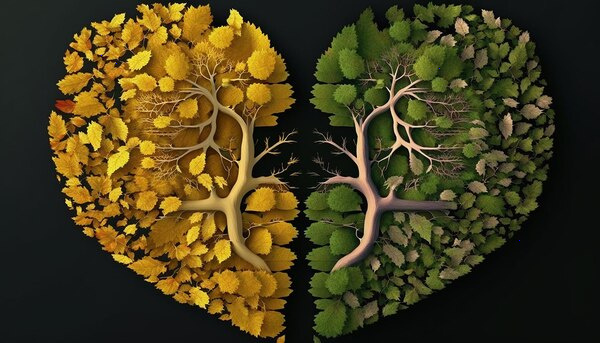Interdependence in Art: A Deep Dive into Symbiotic Themes
Art is a mirror reflecting the complexities of human existence, and today, more than ever, interdependence has emerged as a central theme across various art forms. Whether in visual arts, music, literature, or performance, the concept of mutual reliance is explored in myriad ways to underscore the connectedness of individuals, societies, and even ecosystems.
One prominent example of interdependence in visual arts is the collaboration between artists from diverse backgrounds. These joint efforts often result in works that blend different perspectives, creating a richer and more nuanced final piece. Take, for instance, the collaboration between Western and non-Western artists in contemporary galleries. Such projects highlight the fusion of cultural identities, enhancing both the aesthetic and thematic depth of the work. This demonstrates that art is not an isolated endeavor but a collective experience enriched by diverse influences.

In the realm of music, interdependence can be seen in the symbiotic relationship between different genres and styles. Artists often draw inspiration from a wide range of musical traditions, blending them to create something entirely new. Jazz, for instance, is a genre born out of the confluence of African, Caribbean, and European musical traditions. Modern electronic music, too, frequently samples sounds from diverse musical landscapes, proving that innovation in art is often a product of interconnected influences.
Literature also reflects the theme of interdependence. Storytelling itself is a communal activity, with writers drawing upon the collective experiences and histories of their communities. Contemporary authors often weave narratives that explore the interconnectedness of characters, societies, and even entire worlds. For example, in Haruki Murakami's novels, multiple storylines converge and diverge, emphasizing the interrelated nature of human experiences. This narrative technique underscores that our lives are inextricably linked with those around us, whether we are aware of it or not.
Performance art offers yet another lens through which to view interdependence. Theatre and dance inherently involve a collaborative process among actors, directors, choreographers, and even the audience. Each participant plays a crucial role in bringing the performance to life. This aspect of interdependence is captured vividly in collaborative productions, where the seamless integration of various elements creates a cohesive and powerful experience.
The theme of interdependence extends even further, touching upon the relationship between art and the environment. Land art and environmental installations, for instance, often highlight the delicate balance between human creativity and the natural world. Artists like Andy Goldsworthy create ephemeral sculptures using natural materials, emphasizing the transient and mutually dependent relationship between humans and nature. These works serve as poignant reminders of the interconnectedness of all life forms and the necessity of nurturing these relationships.
In summary, the theme of interdependence in art is not merely a reflection of societal trends but a fundamental aspect of the human condition. Through collaboration, blending of genres, communal storytelling, and environmental consciousness, artists continue to explore and emphasize the interconnectedness that defines our existence. As we navigate an increasingly complex and interwoven world, this theme serves as both a mirror and a guide, reminding us of the power and beauty of our mutual reliance.